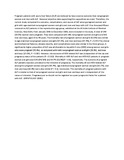| dc.contributor.author | Bhatia, V | |
| dc.contributor.author | Singhal, A | |
| dc.contributor.author | Panda, SK | |
| dc.contributor.author | Acharya, KS | |
| dc.date.accessioned | 2013-07-03T09:07:50Z | |
| dc.date.available | 2013-07-03T09:07:50Z | |
| dc.date.issued | 2008 | |
| dc.identifier.citation | KIRTDA, DRACHARYAS. 2008. Bhatia V, Singhal A, Panda SK, Acharya SK.A 20-year single-center experience with acute liver failure during pregnancy: Is the prognosis really worse?Hepatology. 2008 Jul 9;48(5):1577-1585. [Epub ahead of print] Hepatology. 2008 Jul 9;48(5):1577-1585. [Epub ahead of print]. | en |
| dc.identifier.uri | http://profiles.uonbi.ac.ke/sacharya/publications/bhatia-v-singhal-panda-sk-acharya-ska-20-year-single-center-experience-acute-l | |
| dc.identifier.uri | http://erepository.uonbi.ac.ke:8080/xmlui/handle/123456789/44530 | |
| dc.description.abstract | Pregnant patients with acute liver failure (ALF) are believed to have a worse outcome than nonpregnant women and men with ALF. However objective data supporting this supposition are scant. Therefore, the current study compared the outcome, complications, and causes of ALF among pregnant women and girls with age-matched nonpregnant women and girls and men and boys with ALF. One thousand fifteen consecutive ALF patients in the reproductive age group, admitted at the All India Institute of Medical Sciences, New Delhi, from January 1986 to December 2006, were included in the study. A total of 249 (38.5%) women were pregnant. They were compared with 341 nonpregnant women and girls and 425 men and boys, aged 15 to 45 years. The mortality rate of pregnant women and girls (53.8%) was similar to age-matched nonpregnant women and girls (57.2%), and men and boys (57.9%); P = 0.572.The clinical and biochemical features, disease severity, and complications were also similar in the three groups. A significantly higher proportion of ALF was attributable to hepatitis E virus (HEV) among women and girls who were pregnant (59.4%), as compared with both nonpregnant women and girls (30.4%), and men and boys (23.1%); P < 0.001. However, the outcome of HEV-related ALF was independent of the sex and pregnancy status of the patients (P = 0.103). Mortality in HEV-ALF and non-HEV-ALF patients in pregnant women and girls was 51% (74/145) and 54.7% (52/95)(P > 0.1), respectively. The outcome of pregnant ALF patients was also unrelated to the trimester of pregnancy. The mortality of non-HEV-related ALF among the pregnant women and girls (54.7%), age-matched nonpregnant women and girls (61.7%), and men and boys (62.8%) were also similar (P > 0.1). Conclusion: The mortality of pregnant patients with ALF is similar to that of nonpregnant women and girls and men and boys and is independent of the cause or trimester. Pregnancy per se should not be regarded as a poor prognostic factor for a patient with ALF. (HEPATOLOGY 2008.) | en |
| dc.language.iso | en | en |
| dc.title | A 20-year single-center experience with acute liver failure during pregnancy: Is the prognosis really worse? | en |
| dc.type | Article | en |
| local.publisher | Department of Medicine, College of Health Sciences, University of Nairobi | en |

